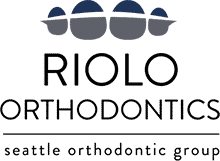Bruxism (BRUK-siz-um) is a condition in which you grind, gnash or clench your teeth. If you have bruxism, you may unconsciously clench your teeth together during the day or grind them at night, which is called sleep bruxism.
Bruxism may be mild and may not even require treatment. However, it can be frequent and severe enough to lead to jaw disorders, headaches, damaged teeth and other problems. Because you may have sleep bruxism and be unaware of it until complications develop, it’s important to know the signs and symptoms of bruxism and to seek regular dental care.
Bruxism may occur during sleep (nocturnal), during the day, or both. It is common in both children and adults. The incidence in children has been variably reported from 7-88%, however most studies report 15-30% incidence (Cash 1988).

The frequency of bruxism increases during childhood, reaching its peak incidence between 7-10 years of age. The etiology of bruxism remains unclear, but it is believed to be multifactorial. The peak in incidence of bruxism between 7-10 years is attributed to the mixture of deciduous and permanent teeth present at this time. Various psychological factors have been postulated to be associated with bruxism. For example, bruxism is thought to be associated with emotions such as frustration, anger, anxiety, or fear. Vanderas (1995) demonstrated that children aged 6-10 years who experienced unpleasant life events were more likely to have bruxism than controls, however this study does not differentiate between diurnal and nocturnal bruxism. According to Cash (1988), when studies are limited to nocturnal bruxism, the relationship of bruxism to emotional stressors is less clear.
Bruxism is often transient and causes less frequent symptoms in children compared to adults. Reassurance may be the only indicated treatment. The most common symptom of bruxism in children is pain on palpation over the muscles of mastication (Cash 1988.) Other symptoms such as temporomandibular joint dysfunction and recurrent headaches may occur. The most common sign of bruxism is abnormal wearing of the teeth. Hypermobility of the teeth, injury to the peridontium, fractured teeth, and pulpitis may also occur.
Psychological treatments may be helpful for some individuals with bruxism. These are aimed at decreasing stress and/or teaching stress management. For example, relaxation training and biofeedback have been reported to have at least short-term benefits in treatment of adults with bruxism. These techniques have not been studied in children with bruxism. Nocturnal alarms have been demonstrated to decrease the frequency and duration of bruxism, but gains may not be maintained after the discontinuation of use of the alarm.

Physical therapists may be involved in the treatment of pain associated with bruxism. A variety of physical therapy techniques may be used such as facial/jaw exercises, application of heat, and transcutaneous electrical stimulation.
Non-steroidal anti-inflammatory agents may also be helpful for pain management. Muscle relaxants may decrease bruxism or associated pain/muscle spasm, but have significant side effects (not the least of which is development of physical dependence) and therefore should not be used as a long-term treatment.








